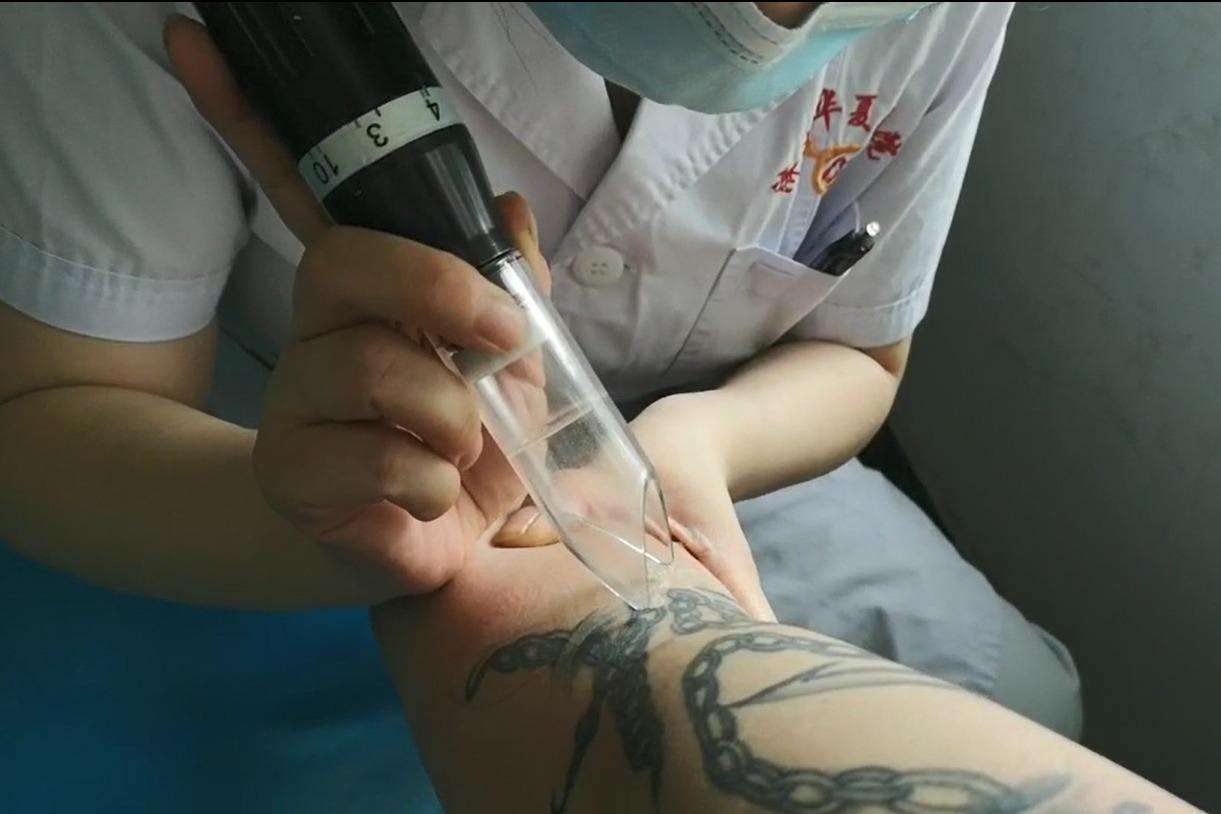High power Q-switched 1064nm/532nm Nd:YAG Laser in tattoo removal: A systematic review (Part 3)
[Cited from: JOURNAL OF COSMETIC AND LASER THERAPY, Authors: Debora Aparecida Oliveira Modena, etc.]
Discussion
In the process of tattoo removal, three variables must be taken into consideration in terms of the selective damage of chromophores: first, the wavelength that will be absorbed, preferably by the target-chromophore, and in this case, the exogenous pigments; second, the quantity of energy must be enough to cause thermal alteration, that is, the delivery of high laser energy with an extremely short pulse duration over the treatment short pulse duration over the treatment area generates high temperatures and causes the fragmentation of the pigment and consequent destruction of the target-chromophores; third, the exposure time must be shorter than the thermal relaxation time, as this period is necessary to guarantee the damage will occur only in the target chromophores.
After the stimulus of the selective destruction of these chromophores, the phagocytosis of these inks occurs. However, the treatment’s efficacy will depend on several factors that are strongly influenced by the individual characteristics of the patient such as age, phototype, ethnicity, associated conditions and history of tobacco use, and the characteristics of the tattoo, whether it is professional or amateur, as well as age, size, type of ink, ink color, density and area of the body.
In this review, we evidentiate some of these factors; according to Vanarase et al. (2017), when the tattoo is amateur, it is generally lighter and the pigments are deposited on the more superficial layer of the dermis, whereas in the professional tattoo the pigment is in the deep dermis, inside the fibroblasts, macrophages or mastocytes, which is why removing amateur tattoo requires fewer session and the results are more effective.
Studies also demonstrate that if the individual is a smoker, or if they suffer from associated or concomitant systemic conditions, this will affect the results of the therapy. Bencine et al. (2012) demonstrated that for individuals who smoke, after 10 sessions with the Nd:YAG (www.wisoptic.com) laser, there was a 69.7% less chance of tattoo removal in comparison to nonsmokers. Tobacco influences clinical responses because of its chronic effect on the inflammatory and immune response as it suppresses the dissemination of the inflammatory cells.
In terms of conditions that lead to changes in the immune system, the time and number of sessions for tattoo removal are also greater when compared to healthy individuals; researchers believe that the residual pigment particles altered by the laser lead to the alteration of the immune system. Therefore, the time and number of sessions for tattoo removal will be greater, when compared to healthy individuals. Researchers also believe that the residual ink particles altered by the laser will be phagocytized by macrophages and eliminated by cellular digestion. If there is an alteration in the immune system, this may cause poor healing and the retention of ink after the laser treatments.
Post time: Mar-23-2022

